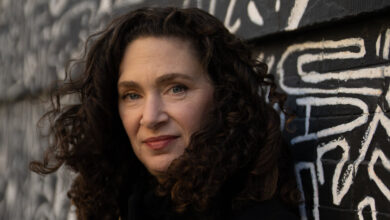Opinion | The Joy of Communal Girlhood; the Anguish of Teen Girls

“What I think is tragic is there’s that kind of short window of time when you’re young, where you’re carefree and authentically yourself and you’re not insecure yet,” India said. “Now those anxieties are starting way earlier, and girls in particular aren’t getting time to just enjoy being a girl. Like if you’re a girl on TikTok who’s categorizing herself and having a ‘sad girl summer,’ that’s not a childhood to me. You are branding and marketing yourself before you’ve even had time to just not be self-conscious.”
I got to thinking about the work of Lauren Greenfield, whose 2002 photography book, Girl Culture, I had read in college. It was groundbreaking at the time for its arresting, gritty portraits of American girls against the backdrop of the garish consumer culture of the early aughts: A girl scrunching her face in dismay at the site of her breasts in a dressing room mirror; girls glammed up like women in beauty pageants, girls at quinceaneras, girl athletes, girls at an eating disorder clinic, girls at prom. In some ways, the portraits were a visual manifestation of a decade of work by scholars like Carol Gilligan and Lyn Mikel Brown, who first brought girls’ faltering sense of self into public view during the girl power era of the 90s. But Greenfield’s portraits zeroed in on the juxtaposition of girls’ inner thoughts and their outward expressions — an “unhappy symbiosis,” as the book’s introduction put it, between their psychological needs “and the superficial, narcissistic content” they were consuming.
Two decades on, what is the state of that symbiosis? Girls’ psychological needs seem to have only grown more complicated, fueled by a far greater swell of “content.” But was it all superficial, narcissistic? I’m not so sure.
I did not see Taylor Swift or Beyoncé in concert this year, but I talked to some of the girls and women who did. Women who described the experiences as “transcendent,” “magical,” “sacred” and “divine,” a kind of “collective uplift,” as Stephanie Burt, the Harvard professor who is teaching a new class on Swiftology, put it. “I put it up there with my wedding night,” my friend Smita Reddy told me, of attending a Swift show with her daughter. A few minutes in, her 9-year-old turned to her and said: “Mom, I don’t feel like I’m alive.”
One of the differences between when Greenfield’s book came out and now is the extent to which women are the primary creative drivers behind much of the culture girls are consuming — which might be why it seems to be speaking to so many of their lives so powerfully. Peggy Orenstein, the author of “Girls and Sex,” who has been writing about girls for 30 years, likened these experiences to a “release valve.” “It’s such a complicated world, and girls and women feel such pressure,” she told me. “Maybe Barbie, or Taylor, offer a release from the pressures of mental health, and give you this moment where you can just live the fantasy, or relax, or be seen, or feel like you don’t have to be seen, or just watch the damned movie.”





